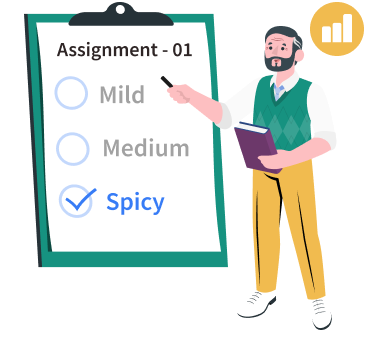Teaching Language of Probability Easily
- Experiment: A repeatable procedure that includes a set of possible results is defined as an experiment.
- Outcome: The possible result of an experiment is known as an outcome.
- Sample Space: Each possible outcome of an experiment is known as sample space.
- Sample Point: Any outcome due to an experiment is defined as a sample point.
| Probability Formula = Number of Outcomes / Total number of Outcomes. |
Q. What is the probability of getting a sum of 6 when two dice are thrown at once?
Answer: There are a total of 36 possibilities when two dice are thrown at once.
Step 1: Determine all the possible outcomes.
So,
Possible Outcomes = ( 3, 6 ), ( 6, 3 ), ( 4, 5 ), ( 5, 4 ).
Total Possible outcomes = 4.
Step 2: Determine all the outcomes = 36.
Step 3: Use the probability formula.
Possible outcomes / total number of outcomes.
4 / 36 = 1/9.
Why Should you use a language of probability worksheet for your students?
- Language of probability worksheet will help your students to learn different terms such as experiment, sample space and point, outcomes, and so on.
- These worksheets will help your students to solve problems on probability very easily.
Download Equations with Language of Probability Worksheets PDF
You can download and print these super fun equations with the language of probability worksheet pdf from here for your students.

